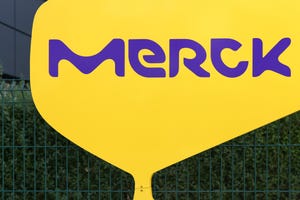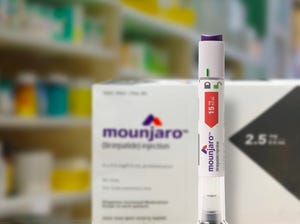
The genetic sequence of the Chinese hamster ovary (CHO) cell line first was published just over a decade ago (1, 2). As with the Human Genome Project, genomic knowledge of that and other biopharmaceutical production cell lines — both animal and microbial — has expanded greatly alongside dramatic increases in computing power (3–5). Meanwhile new and improved genetic engineering techniques have offered the potential for targeted rather than random integration of transgenes into production cells. And regulators began to emphasize monoclonality more, demanding evidence that cell banks are derived from single engineered cells. All the while, cell-line development (CLD) groups faced increasing pressure to shorten timelines associated with their workflows.
As presentations at recent BPI conferences have revealed, “big data,” next-generation sequencing (NGS), automation, and powerful analytical technologies are helping biopharmaceutical companies achieve all those goals in parallel. And despite the widespread popularity of certain instruments, the talks at Biotech Week Boston (BWB) and the BPI Conference US West (BPI West) demonstrated that there is no one way to do so. Combining some of the approaches mentioned herein just might take biopharmaceutical production to new levels that not long ago would have been deemed impossible.
Below we highlight discussions at BWB. Look for more in our BPI West postevent report later this year.
Clonality and Transgene Integration
In September 2022, the BPI Conference program within BWB included both a preconference workshop on CLD and topical talks within the upstream production track. Presenters often spoke about how advanced gene-editing techniques can increase process productivity without compromising product quality. For example, biopharmaceutical companies increasingly are applying transposase-based gene editing to increase gene-integration targeting efficiency and accelerate CLD workflows (see the “Transposases” box). This is helping them reduce the number of subcloning/pool-screening steps that programs require.
Presenters highlighted the importance of high gene-copy numbers for optimized expression. Many talks highlighted the industry’s needs for technologies that enable continuous and/or real-time control of cell-culture parameters, especially for truly on-line process analytical technology (PAT). Many current systems need to improve interfaces between bioreactors and automated samplers/analyzers. BioPhorum representatives announced publication of a risk-assessment guide for raw materials used in CLD and other upstream processes. And some presenters called for greater attention to compositional chemistry, highlighting how such factors influence cell growth, consumption of media nutrients, and other key parameters.
In “Microfluidic-Chip–Based Single-Cell Cloning To Accelerate Biologic Production Timelines,” Geneva Alok (Amgen) explained that after genetic engineering and transfection, CLD can take ~28 weeks. That begins with initial selection of candidate clones through amplification by methotrexate (MTX) or methionine sulfoximine (MSX) and progresses through pool screening, subcloning, large-scale subcloning, clone screening at small production scales, and ultimately, large-scale screening. Alok is one of many speakers at BPI conferences in the past few years reporting on her company’s use of the Beacon instrument from Berkeley Lights to expedite selection and cloning steps. Loaded with thousands of clones, the machine photophoretically sorts single cells into NanoPen chip segments, where they are cultured and monitored continuously. (If two cells end up in a pen, the system can unpen and reload them; usually, the number of single-clone cultures is enough for conclusive results.) The system performs real-time analytics on those single-cell cultures. A complete cloning process takes about five days rather than the two to three weeks needed for fluorescence-activated cell sorting (FACS) methods. Even though the new technology is two to five times more expensive than the older one, large companies increasingly believe that its speed and throughput make up the difference. Amgen has replaced FACS-based screening with a Beacon instrument.
Alok highlighted that system’s Spotlight assay, which enables rapid screening to identify 10 highly productive clones (rather than the 96 productive clones typically identified by FACS). Monoclonality is documented by cell imaging, and CLD is accelerated by elimination of pool-screening steps. The Amgen team ran two different workflows to identify viable clones, then selected top candidates based on the results. When those findings were compared with results from fed-batch cultures of the same clones in Ambr microbioreactors, both performed comparably with similar stability based on parameters such as gene copy number and titer. Alok noted that the shortened workflow could generate clones with high genetic diversity after recovery, but that would require further study.
In “Cell-Bank Characterization and Retrospective Assessment of Clonality,” Guanghua Li (Merck) focused on test methods. Merck’s master cell bank (MCB) and working cell banks (WCBs) are produced according to good manufacturing practice (GMP) standards to reduce the possibility for introducing contamination. Li pointed out that no single testing regime can detect all potential contaminants (e.g., from culture media components). Cell-bank characterization typically entails assessment of a cell substrate’s identity, purity, and suitability for manufacturing applications. Such testing includes assays for viral contamination (often using minute virus of mice as a model) and in vitro/in vivo assays for adventitious agents (AAs).
Highlighting the revised ICH Q5A, which provides for application of NGS in AA testing, Li also summarized options for limit of in-vitro cell age (LIVCA) stability testing, noting that such testing usually is performed only once during cell banking. He noted that it is helpful to perform such testing at an intended production scale (e.g., 2,000 L) or simulation thereof. Doing so can help with study design and to demonstrate genotypic, phenotypic, and biosafety stability over the number of generations required for LIVCA testing. Li also summarized potential cloning strategies to use when demonstrating monoclonality, noting that adaptation to serum-free conditions (if applicable) should be performed before cloning steps are performed.
In “Use of Transposase-Mediated Integration To Reduce Screening and Shorten Cell-Line Development Timelines,” Hillary Warrington (Janssen) pointed to a primary pain point in CLD workflows: Clones can show variable success across transfections and preparations. “That needs to be optimized,” she said, adding, “Ideally, you want a high gene-copy number, which correlates positively with transfection success for expression titers.” Insertion efficiency for a gene of interest (GoI) can be increased in three ways, she said: through modification of transfection methods, gene-modification of host cells, and use of transposase mediators. She focused on the latter, describing her company’s application of ATUM Bio’s Leap-In transposase and transposon technologies.
The technology uses an RNA transposase to insert GoIs at different chromosomal sites and in high copy numbers — with more targeted genetic integration than a conventional plasmid system can offer. In Janssen’s study, ~95% of insertion sites used the transposon, and the resulting clones showed good stability with high copy numbers preserved across passages. The company’s historical data also show that application of Leap-In technology has increased monoclonal antibody (MAb) expression titers consistently since its adoption in 2018.
Warrington pointed out that less random integration enables CLD scientists to reduce the requisite number of subcloning steps, thus enabling earlier production of material for toxicology studies and other relevant activities. Moreover, subclones/populations do not require enrichment before sorting. Such benefits have helped Janssen to shorten its CLD timelines significantly by reducing clone-screening requirements. Other time savings have come from automation.
In “High-Throughput Characterization for IgM Cell-Line Development,” Christina Tsai (IGM Biosciences) reported on an accelerated testing approach. Increasingly, the sheer number of screening activities performed during CLD necessitates adoption of high-throughput instruments and methods. Tsai described her company’s collaboration with a technology supplier to improve and accelerate characterization studies for CLD activities toward production of IgM antibodies. Her company introduced PerkinElmer’s Lab Chip GX II system for high-throughput analysis of glycans, protein expression levels, and product characterization.
As a replacement for sodium-dodecylsulfate polyacrylamide gel electrophoresis (SDS-PAGE), the instrument performs a gel-electrophoretic method on a multiuse microfluidic chip: sodium dodecylsulfate microcapillary electrophoresis (µCE-SDS). Requiring at least 2.5 µL of material, the instrument can analyze each sample in about one minute, and a chip can be reused for 400 samples. IGM’s workflow requires about 1.5 hours of preparation, 50 minutes to run 50 samples, and under an hour for analysis. Tsai highlighted that the method can be performed 6× faster than affinity high-performance liquid chromatography (HPLC) and 25× faster than size-exclusion chromatography (SEC). The system also can be used to assess titer levels and glycan profiles 50× faster than a system for hydrophilic-interaction liquid chromatography (HILIC) testing.
In “Growing Pains: The Ups and Downs of Building a CLD Platform Process from Scratch,” Allyn Spear (Elanco) chronicled successes and pitfalls from development of a host-cell line for production of a canine antibody product. Before 2000, he explained, biologics equated to vaccines in animal health — but that veterinary companies now are expanding into other modalities. Elanco is among the animal-health companies developing capabilities for biological products such as antibodies and other proteins.
Tasked with identifying a glutamine synthetase (GS)–knock-out host-cell line to express a canine antibody, Spear and his colleagues also needed to identify optimal culture parameters toward a long-term goal of producing that antibody at commercial scale. First, they experimented with the GS piggyBac and Leap-In transposon systems (from Lonza and ATUM, respectively) to identify an effective vector strategy. Elanco settled on a two-plasmid transfection approach but found significant variability in transfection efficiency and posttransfection viability. With too many variables involved to narrow down the root cause, the team needed to apply additional reagents to increase transfection consistency.
They used the Berkeley Lights Beacon system for early clone selection activities. Spear noted, however, that the project required custom reagent development because it involved nonhuman antibodies. The team used Ambr microbioreactors from Sartorius for final clone screening. He highlighted difficulties in CLD for start-ups and other small teams: e.g., supply chain problems with equipment availability and inconsistent quality across consumables from different suppliers.
In “Accelerating Cell-Line Development Processes Through Automation Platform Integration,” Woo Chi (Just–Evotec) explained that his company makes abundant use of automation technologies because of a preference for continuous biomanufacturing. He noted that his CLD team faced difficulties in implementing a robotic platform for cell transfer (passaging/retention in a perfusion process). Initially, the system was transferring only 10% of cells, but the team adjusted software scripts over several programming iterations to increase cell transfer to 90%.
In “Implementing Beacon Optofluidic Technology for Accelerated Cell-Line Development for Complex Subunit Vaccine Candidates,” Jishna Ganguly (GSK) pointed out that most reported applications of Beacon technology have been in antibody process development. GSK is the first company to use the photophoretic technology to accelerate CLD activities in production of antigens used in a subunit vaccine.
Ganguly shared a feasibility study that her company used in adopting the system. GSK previously used a 12-day workflow that combined application of a Cell Metric cell imager (Solentim) and an assay from Luminex. The Beacon system accelerated CLD considerably while generating results comparable to those from the previous workflow.
Ganguly concluded by highlighting continuing CLD needs of vaccine makers, who could benefit from solutions that reduce manual handling during testing and that minimize the number of instruments required for the many kinds of screening performed (e.g., for clone productivity, product quality, monoclonality). Although many choices are available, drug makers often apply many different technologies, increasing experimental effort and time along with the complexity of system integration.
In “Evaluation of Transposase Technology To Generate Highly Productive CHO Cell Lines,” Eric Lee (Biogen) explained that his company, like many other drug developers, is leveraging transposase-mediated gene editing to expedite CLD activities. His team accelerated CLD by two weeks through applying Lonza’s GS piggyBac transposon system and eliminating steps for MTX amplification. That allowed the program to move right into evaluation of material from recovered pools. Transfection recoveries were good, and although the transposon system generated considerably more random integration than Biogen’s legacy method did, pool-expressed material was comparable in quality, with aggregation and isoform levels that aligned with those from historical data. In subsequent studies, Biogen determined that the transposase system also was compatible with MTX amplification and that adding that step back into the workflow increased expression titers significantly. Ultimately, the company improved its CLD workflow to generate material for toxicology studies five months earlier than would have been possible with the legacy method.
In “Epigenetic Comparison of CHO Hosts and Clones Reveals Divergent Methylation and Transcription Patterns Across Lineages,” Meiping Chang (Merck) noted that genomic and epigenomic analyses are becoming critical to assessment of transgene integration and clone selection. The trick, she explained, is to evaluate epigenetic regulators of transcription without dismantling host-cell DNA, especially because epigenetic markers can be inserted or removed.
She explained that DNA-methylation patterns are passed down by parent cells, although new patterns can emerge during cloning. Underlying mechanisms of such changes include differential expression of epigenetic readers, erasers, and effectors. To demonstrate, Chang shared her team’s testing of two host-cell lines for genomic changes over several generations by searching for differentially methylated regions (DMRs). Most clonal cells showed inherited changes in methylation patterns. That, Chang explained, could indicate development of a trait for long-term genetic stability. Using such information could help CLD scientists to find ideal candidates for transgene integration.
Emphasis on Speed
The focused CLD workshop at Biotech Week Boston culminated in a panel discussion titled “Techniques and Technologies To Accelerate CLD and Solve Bottleneck Challenges,” with Allyn Spear, Woo Chi, Hillary Warrington, and William Rice (Nexcelom Bioscience). Panelists noted that companies increasingly are using artificial intelligence (AI) to identify and optimize vector constructs. Both on the stage and in the audience, there was particular excitement for growth in libraries for human antibodies. One attendee asked whether it could be helpful to use a reporter gene during early CLD activities. Panelists explained that such genes are not secreted as antibodies are; thus, they might be useful for gauging transfection efficiency but not for expression titer.
Many participants questioned whether to use random or targeted gene integration during CLD. Panelists explained that pools from clones generated using the former technique often show more heterogeneity and experience epigenetic drift over time. Technologies for targeted integration can generate more homogenous pools that might show less drift. However, even minor epigenetic drift must be characterized, so drug makers using targeted integration would not be relieved of some associated regulatory burden for product characterization. One panelist noted that current technologies for targeted gene integration also result in some random integration and that such occurrences could cause regulatory questions. Considering the significant costs associated with targeted-integration technologies, developers should evaluate their needs carefully to help ensure that such solutions will be worth the investment.
Transposases Vics Z, Izsvák Z. A Whole Lotta Jumpin’ Goin’ On: New Transposon Tools for Vertebrate Functional Genomics. Trends Genet. 21(1) 2005: 8–11; https://doi.org/10.1016/j.tig.2004.11.008. |
Cell-Line Engineering at BPI West
Held on 27 February through 2 March 2022, the BPI West program in San Diego, CA, included a full track devoted to cell-line development. Many themes followed from the BWB discussions a few months before, but the overall emphasis shifted toward applying advanced genetic engineering techniques to improve cell stability, productivity, predictability, and viability. Technological potentialities touted over recent years seem to be coming to fruition in big ways in the post-COVID era. Look for a full report on the program coming up later this year.
References
1 Wurm F, Hacker D. First CHO Genome. Nat. Biotechnol. 29, 2011: 718–720; https://doi.org/10.1038/nbt.1943.
2 Xu X, et al. The Genomic Sequence of the Chinese Hamster Ovary (CHO)-K1 Cell Line. Nat. Biotechnol. 29, 2011: 735–741; https://doi.org/10.1038/nbt.1932.
3 Lewis N, et al. Genomic Landscapes of Chinese Hamster Ovary Cell Lines As Revealed By the Cricetulus griseus Draft Genome. Nat. Biotechnol. 31, 759–765 (2013); https://doi.org/10.1038/nbt.2624.
4 Rupp O, et al. A Reference Genome of the Chinese Hamster Based on a Hybrid Assembly Strategy. Biotechnol. Bioeng. 115(8) 2018: 2087–2100; https://doi.org/10.1002/bit.26722.
5 Lin D, et al. CHOmics: A Web-Based Tool for Multi-Omics Data Analysis and Interactive Visualization in CHO Cell Lines. PLOS Comput. Biol. 22 December 2020; https://doi.org/10.1371/journal.pcbi.1008498.
Brian Gazaille is managing editor, and corresponding author Cheryl Scott is cofounder and senior technical editor of BioProcess International (part of Informa Connect Life Sciences); 1-212-600-3429; [email protected]; https://www.bioprocessintl.com.
You May Also Like


.jpg?width=700&auto=webp&quality=80&disable=upscale)
.jpg?width=700&auto=webp&quality=80&disable=upscale)


